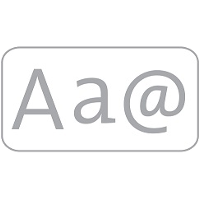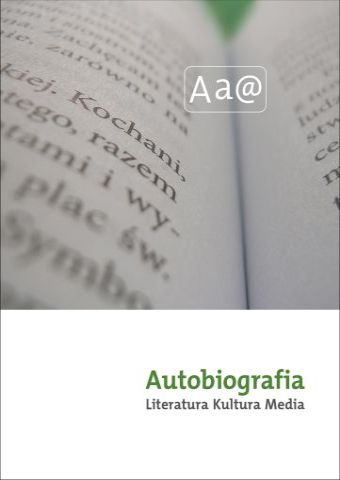






| Authors: |
Elżbieta
Klimek-Dominiak
Uniwersytet Wrocławski |
| Keywords: | auto/biography graphic novel graphic memoir Jewish American comics alternative comics |
| Data publikacji całości: | 2017 |
| Page range: | 12 (121-132) |
| 1. | Baetens, Jan, Hugo Frey. The Graphic Novel: An Introduction. New York: Cambridge University Press, 2015. |
| 2. | Barry, Lynda. One! Hundred! Demons! Montreal: Drawn & Quarterly, 2017. |
| 3. | Bikont, Piotr. „Kto się boi myszy?”. Przekrój, 8.04.2001, 5. Dostęp 11.07.2017. http://mbc.malopolska.pl/Content/90385/przekroj_2001_014.pdf. |
| 4. | Chute, Hillary L. „Comics as Literature? Reading Graphic Narrative”, PMLA 123 (2) (2008): 452–465. Dostęp 8.07.2017. https://www.jstor.org/stable/25501865?seq=1#page_scan_tab_contents. |
| 5. | Chute, Hillary L. Graphic Women: Life Narrative and Contemporary Comics. New York: Columbia University Press, 2010. |
| 6. | Chute, Hillary L. Outside the Box: Interviews with Contemporary Cartoonists. Chicago: The University of Chicago Press, 2014. |
| 7. | Chute, Hillary L. Disaster Drawn: Visual Witness, Comics, and Documentary Form. Cambridge: The Belknap Press of Harvard University, 2016. |
| 8. | Czermińska, Małgorzata. Autobiograficzny trójkąt. Świadectwo, wyznanie i wyzwanie. Kraków: Universitas, 2000. |
| 9. | Gajewska, Grażyna. „Słowo – obraz – pamięć w labiryntach komiksu”. Biblioteka 21 (2008), 12: 101–115. |
| 10. | Gardner, Gared. „Autography’s Biography”. Biography 31 (2008), 1: 1–26. |
| 11. | Hagedorn, Wanda, Jacek Frąś. Totalnie nie nostalgia. Memuar. Warszawa: Wydawnictwo Komiksowe Kultura Gniewu, 2017. |
| 12. | Konefał, Sebastian Jakub. Wstęp do Powieści graficzne. Leksykon, red. Sebastian Jakub Konefał, Warszawa: timof i cisi wspólnicy, 2015. |
| 13. | Lightman, Sarah. Graphic Details: Jewish Women’s Confessional Comics in Essays and Interviews. Jefferson: McFarland, 2014. |
| 14. | Lightman, Sarah, Michael Kamine. Wystawa Graphic Details: Confessional Comics by Jewish Women. The Jewish Daily Forward. Dostęp 25.05.2017. http://forward.com/graphic-details/. |
| 15. | Łysak, Tomasz. „Contemporary Debates on the Holocaust in Poland: The Reception of Art Spiegelman’s ‘Graphic Novel’ Maus”. Polin: A Journal of Polish-Jewish Studies 21 (2008): 469–479. |
| 16. | Masłoń, Krzysztof. „Myszy i ludzie”. Rzeczpospolita 104 (2001): D4. |
| 17. | „Maus. Opowieść ocalałego. Rozmawiają: Paweł Kierzniewski, Agnieszka Lichnerowicz, Adam Ozga, Dionisios Sturis, Paweł Sulik, Patrycja Wanat, Łukasz Wojtusik”. Poczytalni. TokFm, 7.01.2017. Dostęp 1.10.2017. http://audycje.tokfm.pl/podcast/-Maus-Opowiesc-ocalalego-Rozmawiaja-Lukasz-Wojtusik-Ewelina-Szymczak-Aneta-Pytrus-Adam-Ozga-Agnieszka-Lichnerowicz/45125. |
| 18. | Oksman, Tahneer. „How Come Boys Get to Keep Their Noses?”: Women and Jewish American Identity in Contemporary Graphic Memoirs. New York: Columbia University Press, 2016. |
| 19. | „Powieść brukowa”. W: Słownik terminów literackich, red. Janusz Sławiński, 383. Wrocław: Zakład Narodowy im. Ossolińskich, 1989. |
| 20. | Precup, Mihaiela. The American Graphic Memoir. An Introduction. Bucureşti: Editura Universităţii din Bucureşti, 2013. |
| 21. | Pstrągowski, Tomasz. „Polski komiks autobiograficzny”. Autobiografia 5 (2015), 5: 33–47. |
| 22. | Rogowski, Zbigniew K. „Antypolski zwierzyniec: Korespondencja z Chicago”, Gazeta Polska 38 (1997): 17. |
| 23. | Royal, Derek Parker. „Drawing Attention: Comics as a Means of Approaching U.S. Cultural Diversity”. W: Teaching Comics and Graphic Narratives: Essays on the Theory, Strategy and Practice, red. Lang Dong, 67–79. Jefferson: McFarland, 2012. |
| 24. | Spotkanie z Wandą Hagedorn i Jackiem Frąsiem. Facebook: Wydawnictwo Komiksowe. Transmisja wideo ze spotkania w Klubie Proza. Wrocław 23.05.2017. Dostęp 1.10.2017. https://www.facebook.com/totalnienienostalgia/. |
| 25. | Szyłak, Jerzy. „O powieściach graficznych”. W: Powieści graficzne. Leksykon, red. Sebastian Jakub Konefał, 15–28. Warszawa: timof i cisi wspólnicy, 2015. |
| 26. | Traczyk, Michał. „Art Spiegelman. Maus Opowieść Ocalałego”. W: Powieści graficzne. Leksykon, red. Sebastian Jakub Konefał, 224–226. Warszawa: timof i cisi wspólnicy, 2015. |
| 27. | Weschler, Laurence. „Field Notes. Pig Perplex”. Lingua Franca 11 (2001), 5. Dostęp 11.07.2017, http://linguafranca.mirror.theinfo.org/print/0107/field_notes.html. |
| 28. | Whitlock, Gillian. „Autographics: The Seeing ‘I’ of the Comics”. MFS Modern Fiction Studies 52 (2006), 4: 965–979. |
| 29. | Wodiczko, Krzysztof. Wodiczko Socjoestetyka. Rozmawia Adam Ostolski. Warszawa: Wydawnictwo Krytyki Politycznej, 2015. |
| 30. | Wróbel, Olga. „Z szuflady na barykady”. Znak 745 (2017): 100–105. |
| 31. | Wróblewski, Michał. „Wstępna charakterystyka powieści graficznej. W stronę genologii humanistycznej”. Zagadnienia Rodzajów Literackich 53 (2010), 1–2: 153–181. Dostęp 8.07.2017. http://hdl.handle.net/11089/17122. |
| 32. | Zawrotny, Przemysław. „Powieść graficzna jako zjawisko”. W: Powieści graficzne. Leksykon, red. Sebastian Jakub Konefał, 53–61. Warszawa: timof i cisi wspólnicy, 2015. |